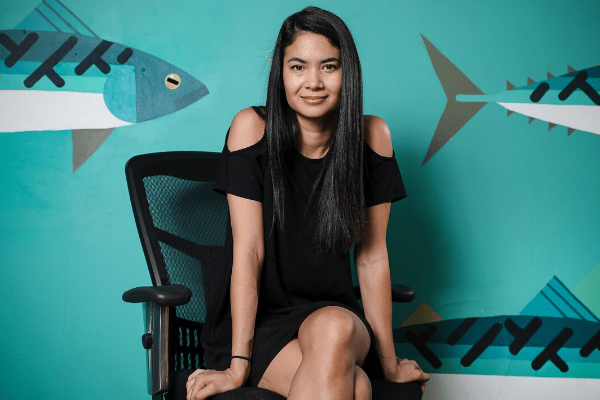Melanie Perkins has become one of the wealthiest women in Australia this week, after her graphic design company Canva, which she co-founded with Cliff Obrecht and Cameron Adams, raised US$60 million in new funding.
This latest procurement values the startup at $8.6 billion (US$6 billion), almost double its previous valuation made last October of US$3.2 billion. The new funding was led by Australian venture capital fund Blackbird and Chinese firm Sequoia China, with participation from previous investors Bond, Felicis and General Catalyst.
This latest round of funding makes Canva the largest privately-owned company in Australia. The Sydney-based company, with more than a thousand employees operating across multiple countries across the world, operates on a “freemium” model that allows its users to access its software for free to design products including posters, websites and business cards.
Perkins co-founded the company in 2014 with her partner Cliff Obrecht, and she has since amassed a personal wealth of an estimated $1.3 billion. Perkins is now Australia’s third-richest woman and the youngest Aussie billionaire.
Offices outside the headquarters in Sydney include Manila and Beijing, though with the new funding, Obrecht told Forbes they hope to launch an office in Austin, Texas to serve as a U.S. enterprise hub. It also recently announced a partnership with FedEx, which would allow FedEx customers to use Canva’s extensive libraries of templates, images and illustrations to design print materials for their businesses.
The company said design creation and sharing on Canva has increased by 50% since the start of COVID-19, and are doubling its paid user base, which has reached over half a billion organisations and 1.5 million paid subscribers to the paid account type, Canva Pro.
The latest round of funding will go into expanding its collaboration tools, considering potential acquisitions providing the company with more cash reserves amid the uncertainty of the COVID19 pandemic.
During the pandemic, the company saw clients’ use of its collaboration and video tools soar and large numbers of small businesses turned to making designs to reach customers over social media.
Currently more than 30 million people each month use Canva, including 90,000 schools and universities, 55,000 non-profits, and companies including American Airlines, Hubspot and Warner Music.
Cliff Obrecht told Brooke Corte on 2GB Radio this week they experienced anxiety at the beginning of the pandemic, unsure of the company’s future.
“Moving into COVID, we were initially quite cautious because we thought that the business would be hit quite hard with lots of small and medium business really struggling, and we thought that would impact business metrics,” he said.
“Small businesses were pivoting and needed to communicate to their customers that they were changing the way they do things, restaurants were moving to deliveries, and then a lot of large were using Canva extensively to communicate with their teams and create marketing material for social media. We really hit the mark through this period and saw growth.”
When Obrecht spoke to Julie-anne Sprague at the Financial Review, he described the importance of communication during challenging times.
“Teamwise, shifting to a remote working environment has been relatively smooth,” he said. “Now more than ever we’re finding it important to advocate for open communication across the company to ensure everyone is moving in the same direction.”
“We’re also constantly learning about the impact on, and responsibility we have, for our community. We’re living in uncertain times, so we definitely don’t have all the answers –but what we do know and have agreed on right from the start is we must continue to put our people first – back our team and find new ways to support our community.”
The company is passionate about philanthropy and contributes significant donations to causes the founders care about.
Last December, Perkins announced that Canva would join the 1 per cent movement, donating 1 per cent of its equity, profit and resources to “making the world a better place”.
“Companies have a huge role to play in helping to shape the world we live in and we feel like the 1 per cent pledge is an incredible program which will help us to use our company’s time, resources, product and equity to do just that,” she said.
“We believe the old adage ‘do no evil’ is no longer enough today and hope to live up to our value to ‘be a force for good’.”
This month, Perkins told Vogue Australia she believes in the essential role technology education plays in the future of this country.
“Earlier this year, we launched Canva for Education and opened it up to all students and teachers worldwide for free,” she said. “Education is just one example of how we are using the best of Canva to support our future leaders with much-needed digital literacy skills.”

